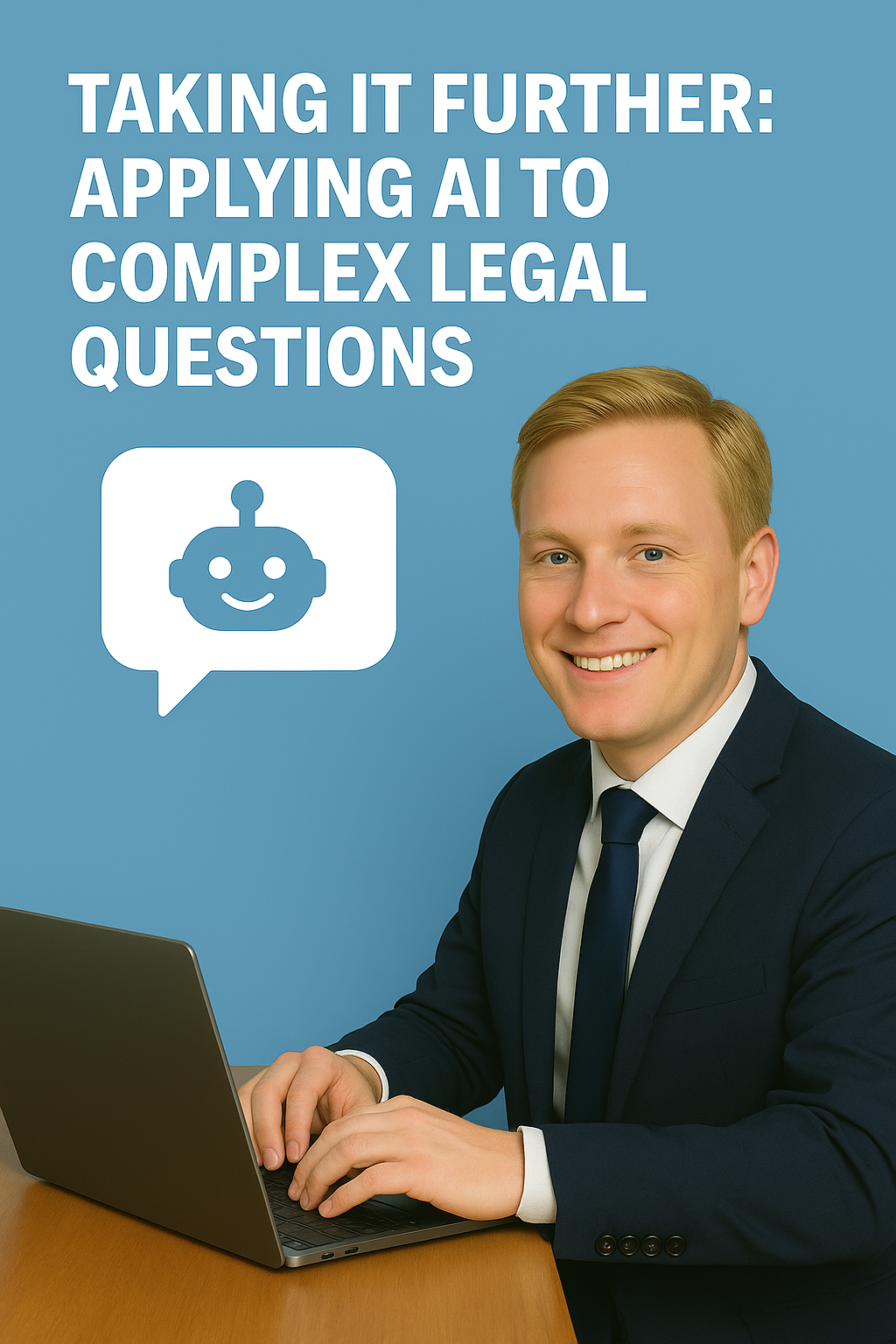You’ve learned how to start using AI and explored how it can assist with document review and legal research. Now we arrive at the frontier: using AI for higher-level legal thinking.
In this final installment, we’ll cover how lawyers can use AI to test arguments, explore case strategies, and generate insights—without crossing ethical or practical lines. Think of this as inviting AI into a strategy session: it won’t lead the conversation, but it can spark new angles and help you prepare smarter.
If you missed part 1 or 2 you can read them here:
AI for Lawyers: A Practical Guide to Getting Started – Part 1
AI for Lawyers: A Practical Guide to Getting Started – Part 2
For our examples, we have been using Open AI, Chat GPT.
From Tasks to Thinking: What AI Can (and Can’t) Do
AI has become increasingly capable at:
- Spotting patterns
- Weighing hypothetical scenarios
- Summarizing pros/cons of a position
- Brainstorming legal strategies
But it can’t:
- Predict outcomes with certainty
- Replace nuanced legal judgment
- Cite real, up-to-date cases reliably (without verification)
How to Ask Advanced Questions
To get meaningful output, you need to provide context. Instead of asking, “Will I win this case?”, try:
- “Based on the following facts, what are the strongest arguments for the defendant in a negligence action?”
- “Here is a hypothetical motion to dismiss. What counterarguments could a plaintiff raise?”
- “Compare the risks of settling now versus pursuing litigation in this scenario.”
Strategic Use Cases
- Argument Mapping:
- AI can help generate a list of potential arguments and counterarguments on both sides.
- Case Assessment Prep:
- Use AI to walk through the facts and flag likely issues or areas of weakness.
- Client Communication Drafts:
- Try asking AI to help write a client update summarizing strategic options.
- Mock Opponent Exercise:
- Ask AI to “argue” against your position to help pressure test it.
Example Prompt:
“I represent a commercial tenant being sued for breach of lease. The landlord claims nonpayment, but my client withheld rent due to unaddressed habitability issues. What are the key defenses and risks in pursuing a countersuit?”
This type of detailed prompt gives the AI enough substance to work with and leads to more actionable insights.
Guardrails for Strategic Use
- Always double-check case law and jurisdictional nuances.
- Use it for ideation, not conclusions.
- Stay within ethical and professional bounds. AI is a tool, not a legal adviser.
Closing Thoughts
AI isn’t just for busywork. With the right inputs and oversight, it can serve as a sounding board, a mock adversary, and a strategy amplifier. It won’t replace your legal reasoning—but it will sharpen it.
The future-ready lawyer isn’t replaced by AI. They work alongside it—and they ask better questions.


